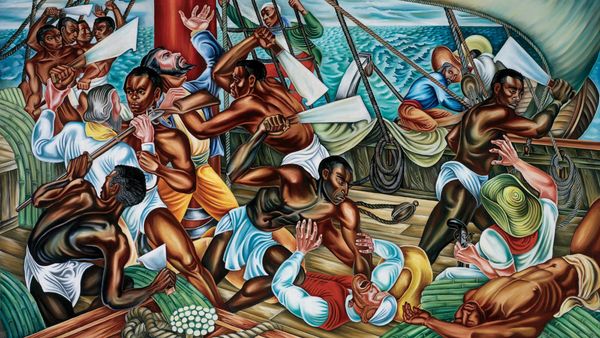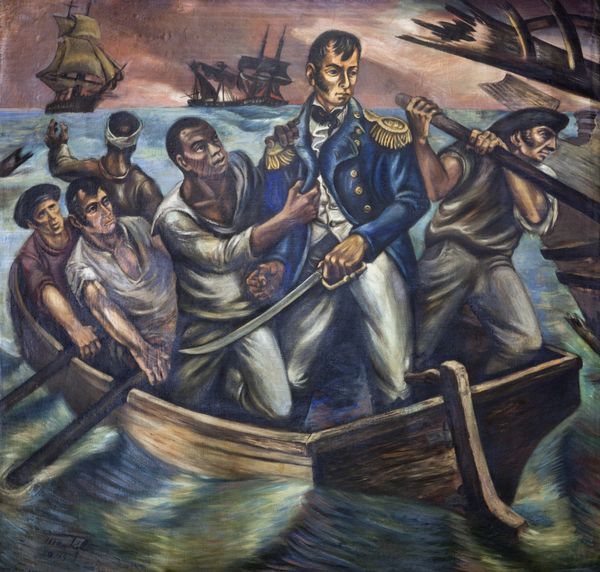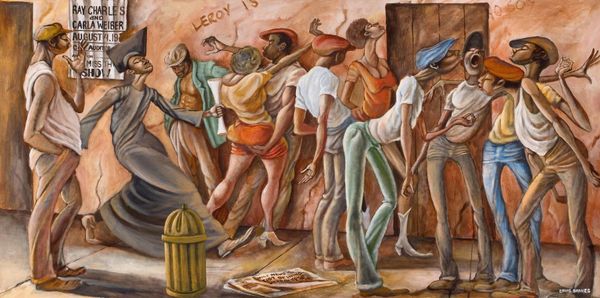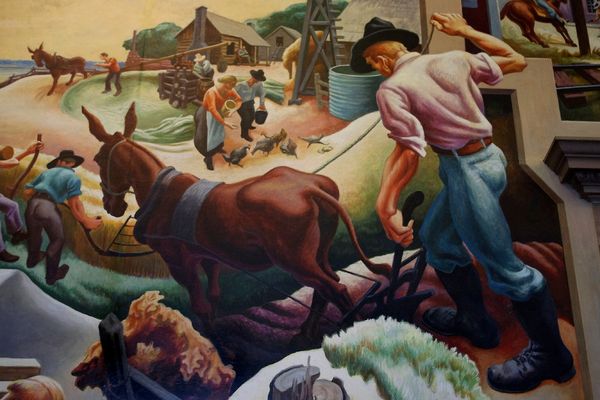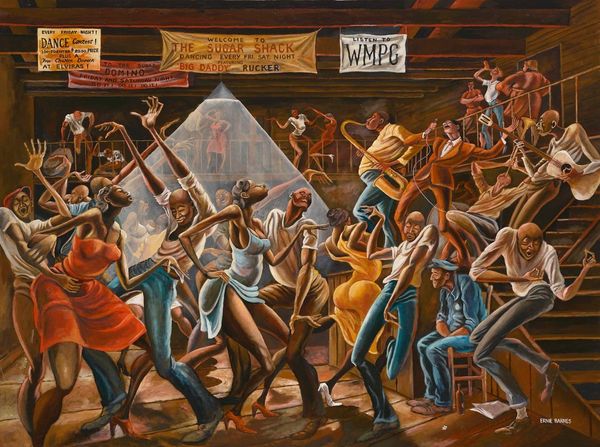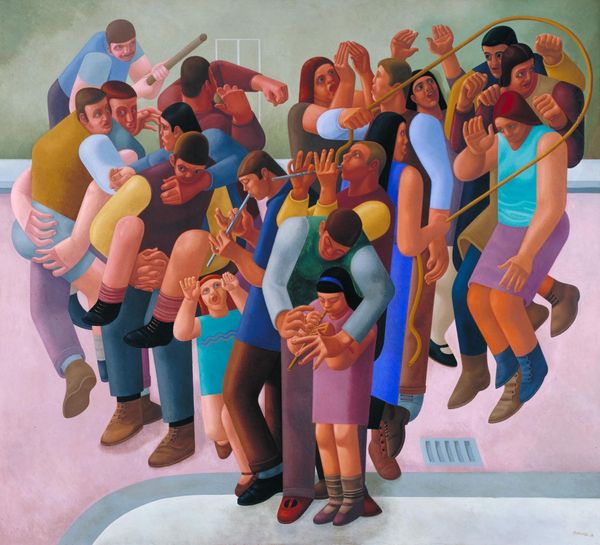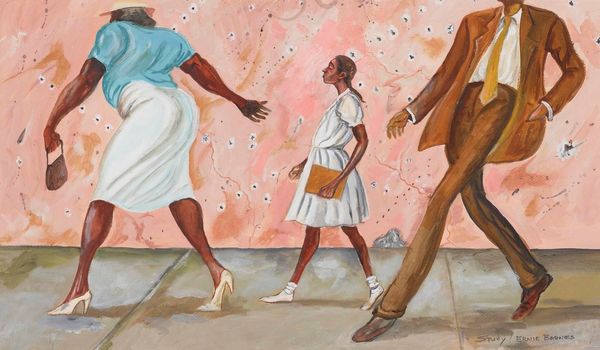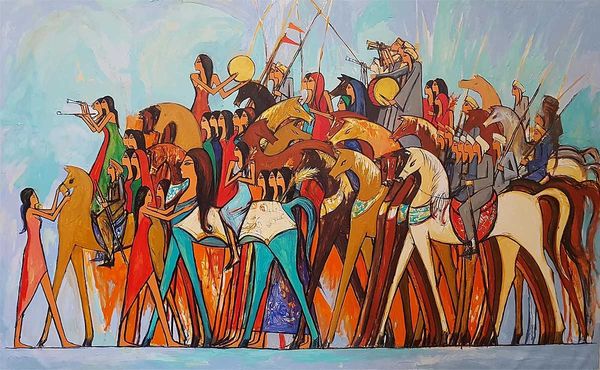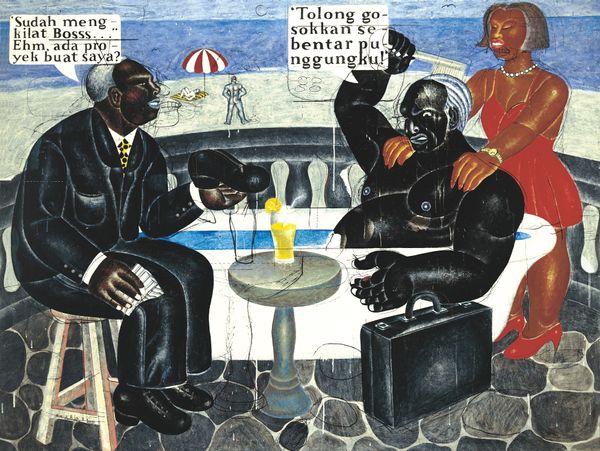
painting, mural
#
portrait
#
african-art
#
painting
#
figuration
#
group-portraits
#
history-painting
#
portrait art
#
mural
#
regionalism
Copyright: Hale Woodruff,Fair Use
Editor: So, here we have Hale Woodruff’s “Repatriation of the Freed Captives” from 1939. It's a painting, a mural, really. I’m immediately drawn to the composition – it’s this dynamic grouping of figures with these bold colors and strong lines, but I'm not entirely sure how it all connects. What’s your take on it? Curator: Formally speaking, consider how Woodruff employs line to define the figures. See the almost harsh outlining and the simplified planes that describe form? These choices contribute to the overall flattening of the image, typical of mural painting intended to be viewed from a distance. Editor: I notice that some figures appear more prominent than others, are you seeing a particular organization of subjects? Curator: Indeed. Observe how Woodruff orchestrates the interplay between these various figures within a very tight pictorial space, a type of shallow relief. We have overlapping planes of individuals moving to and fro against an aqueous backdrop. What impact does that visual compaction achieve? Editor: I guess it does bring attention to their shapes and placement, making them stand out instead of blending in the scene. What do you make of the palette? Curator: The application of strong primary colors along with greens and oranges is certainly considered and heightens the drama. Note the juxtaposition of vibrant hues against more muted tones. How does this tension impact the overall reading of the work, would you say? Editor: It makes me feel like the painting’s bursting with a controlled kind of energy! Curator: Precisely. It’s a very deliberate activation of the picture plane. In a work so dependent on figurative representation, the formal arrangement supersedes, or perhaps enhances, narrative clarity. Woodruff, in this work, makes a formal argument using a historical subject as its foundation. Editor: That's such a useful observation! I realize I was so focused on trying to "read" the scene I didn't really process how the visuals impacted my feelings first. Curator: And this understanding is a very important step toward understanding how a formal reading informs and augments a narrative reading of a painting.
Comments
No comments
Be the first to comment and join the conversation on the ultimate creative platform.



